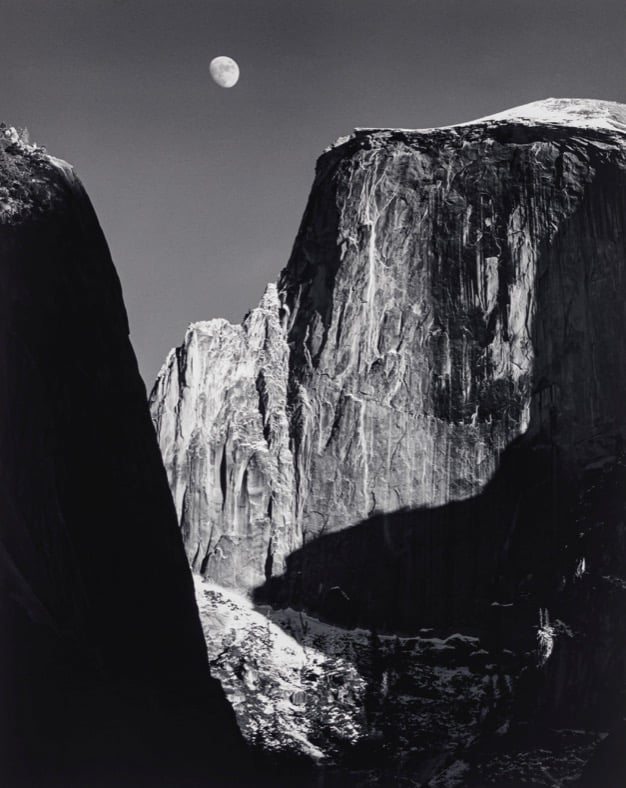

Uh oh...
It appears that you're using a severely outdated version of Safari on Windows. Many features won't work correctly, and functionality can't be guaranteed. Please try viewing this website in Edge, Mozilla, Chrome, or another modern browser. Sorry for any inconvenience this may have caused!
Read More about this safari issue.

Ansel Adams holds a rare place in the artistic consciousness of this country. Any black-and-white photograph of a landscape in the American west brings Adams to mind. Much of that is deserved – his striking images of national parks and this country’s undocumented areas over a five-decade-long career made him a household name.
But it’s also not fair or complete – photographers came before and after him. They inspired Adams, and his techniques were later expanded upon by more contemporary artists. This before-and-after idea is the central premise to the new exhibit currently on display at Crystal Bridges Museum of American Art in Bentonville. “Ansel Adams: In Our Time,” opened Saturday (Sept. 19).
“When we think about the national parks, or we think about the American West, a lot of times, what comes to mind are those grand vistas that Ansel Adams helped articulate in the public consciousness,” said Alejo Benedetti, assistant curator at Crystal Bridges, while speaking during a virtual press conference for media members.
Organized by the Museum of Fine Arts, Boston, the new exhibit contains over 100 photos from Ansel Adams. Bookending those works are 80 more by 19th-century photographers, then works by 24 contemporary photographers.

The gelatin silver print photograph “Moon and Half Dome, Yosemite National Park” by Ansel Adams (American, 1902–1984) from 1960 is part of the new exhibit “Ansel Adams: In Our Time” which debuted last weekend at Crystal Bridges Museum of American Art in Bentonville. The Ansel Adams Publishing Rights Trust, Courtesy of Museum of Fine Arts, Boston – Lane Collection.
“It gives us the opportunity to look back in time but also understand how Ansel Adams’ legacy continues on through today and how it remains relevant through today,” Benedetti said.
The collection is not a chronological march. Instead, it’s organized into seven thematic sections based on the places Adams shot throughout his career. Each of the sections feature works by Adams paired with photographs by other artists. The exhibit moves viewers from Westward Beginnings, with a focus on Yosemite; Marketing the View; Becoming a Modernist, regarding his transition into more artistic offerings; Picturing the National Parks, about his role in promoting national parks; In the American Southwest, focusing on his fascination with the Southwest; The Other Side of the Mountains, including images of desert regions; and finally, The Changing Landscape, which deals with the aftermath of human intervention on wild lands.
His stature as a photography icon was forged via photos like “Moon and Half Dome, Yosemite National Park” and “Tetons and the Snake River, Grand Teton National Park, Wyoming.” The exhibit includes the requisite descriptive details, such as a note included alongside “Tetons and the Snake River” that tells viewers that tree growth in the nearly 80 years since Adams took the photo now prevents park visitors from seeing the river in the same way he did. Photographs are truly a moment in time.
Continue Reading at Fayetteville Flyer
We do the work.
You check your email.
Sign up for our weekly e-news.
Get stories sent straight to your inbox!










Like this story? Read more from Fayetteville Flyer - Kevin Kinder
Sports are great! They give us commonality, a shared experience that...
In a story told by Alejo Benedetti, the concert photographers Jim...
Coming to the Walmart Arkansas Music Pavilion in 2025 is a lineup...
Join the Conversation
Leave a Comment